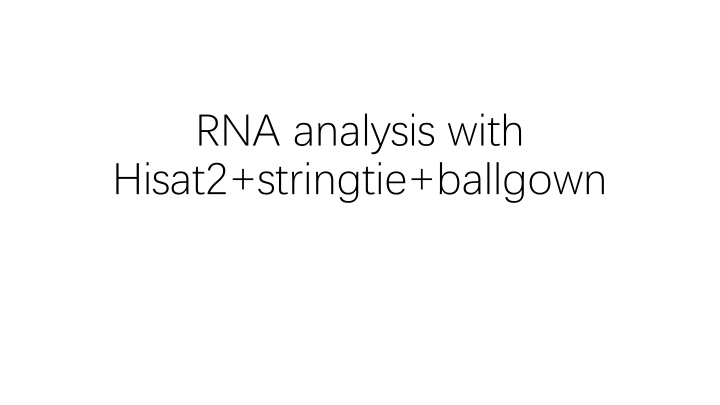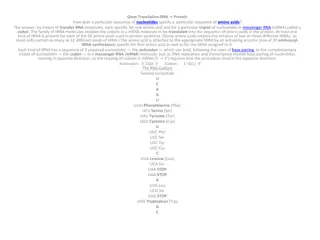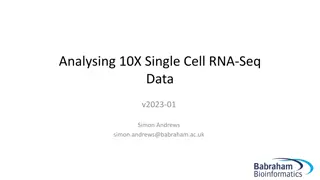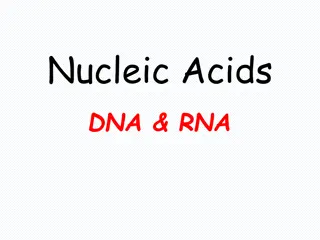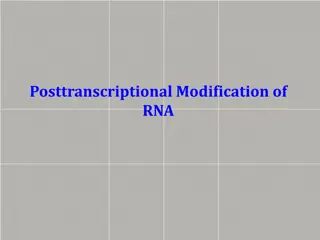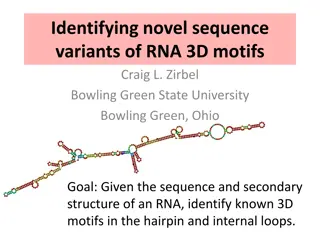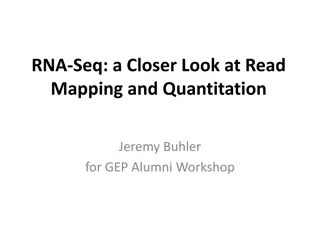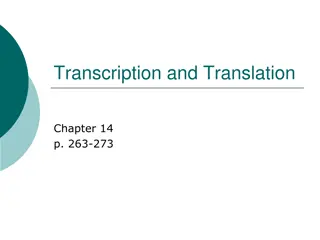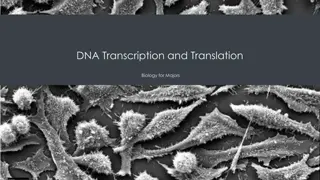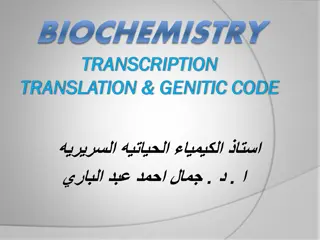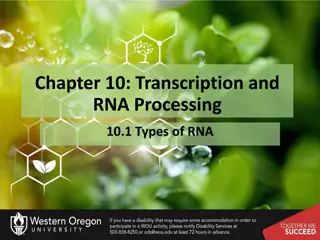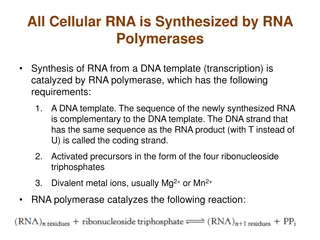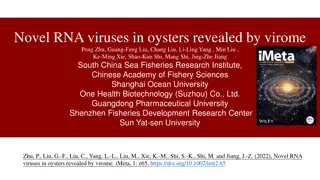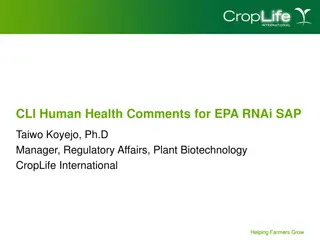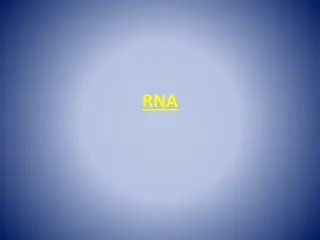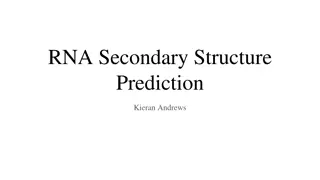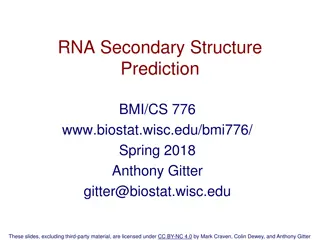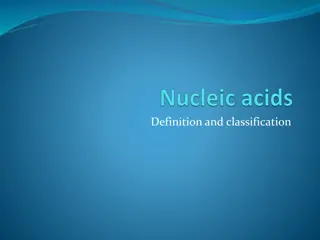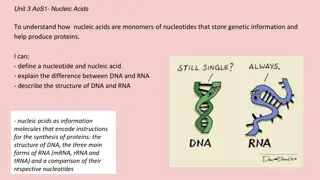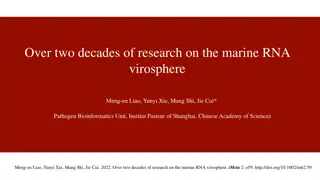Analysis of RNA using Hisat2, StringTie, and Ballgown
This project focuses on utilizing Hisat2, StringTie, and Ballgown for RNA analysis. By implementing these tools, the study aims to dissect the transcriptome data and gain insights into gene expression patterns. The methodology involves mapping RNA-seq reads with Hisat2, assembling and quantifying transcripts using StringTie, and further analysis and visualization through Ballgown. This integrated approach allows for a comprehensive understanding of gene expression dynamics and facilitates comparative studies across different conditions or samples. The results obtained from this analysis will provide valuable information for further downstream analysis and interpretation in the field of genomics and transcriptomics research.
Download Presentation

Please find below an Image/Link to download the presentation.
The content on the website is provided AS IS for your information and personal use only. It may not be sold, licensed, or shared on other websites without obtaining consent from the author.If you encounter any issues during the download, it is possible that the publisher has removed the file from their server.
You are allowed to download the files provided on this website for personal or commercial use, subject to the condition that they are used lawfully. All files are the property of their respective owners.
The content on the website is provided AS IS for your information and personal use only. It may not be sold, licensed, or shared on other websites without obtaining consent from the author.
E N D
Presentation Transcript
RNA analysis with Hisat2+stringtie+ballgown
the aim of this process 1.with reference (reference annotation) 2.find difference expression analysis 3.find novel transcripts & splice variants 4.fast and lower equipment need(like memory, cpu)
1.Raw data handle 1. Raw data QC & visualization Do with fastqc 2.Reomve adapter & low quality Do with trim_galore (automatic distinguish adapter type) 3.Repeat quality test &visualization of clean_data
Full process This pipeline is the next generate of tophat + Cufflinks
1.Hisat2 aligning reads Based on two types of indexes for alignment 1.global, whole-genome index 2.tens of thousands of small local indexes Build Index stratergy 1.BWT (Burrows Wheeler transform ) Stores the reference genome in a highly compressed form 2.FM (Ferragina Manzini index) these programs can search a genome extremely rapidly ????2 ? 8 ??? ? ? ??_????/???????/? ??_ ???? ??? ??? ???188245 ? ???188245_? ??.???
stringtie introduce stringtie -p 8 -G chrX_data/genes/chrX.gtf o ERR188273_chrX.gtf l ERR188273 ERR188273_chrX.bam stringtie e B -p 8 -G stringtie_merged.gtf -o ballgown/ERR188044/ERR188044_chrX.gtf ERR188044_chrX.bam
Stringtie- Transcript assembly StringTie is designed to produce a linked set of tables that can be directly read into R using functions in the Ballgown package.
transcripts compare with the reference annotation Gffcompare 1.Do QC, estimate your gtf 2.Change isoform ID Without this step the results are started with MSTRxxx(give by stringtie)
Estimate transcript abundances and create table counts for Ballgown this time do stringtie & use the merge result gtf stringtie e B -p 8 -G stringtie_merged.gtf -o ballgown/ERR188044/ERR188044_chrX.gtf ERR188044_chrX.bam
